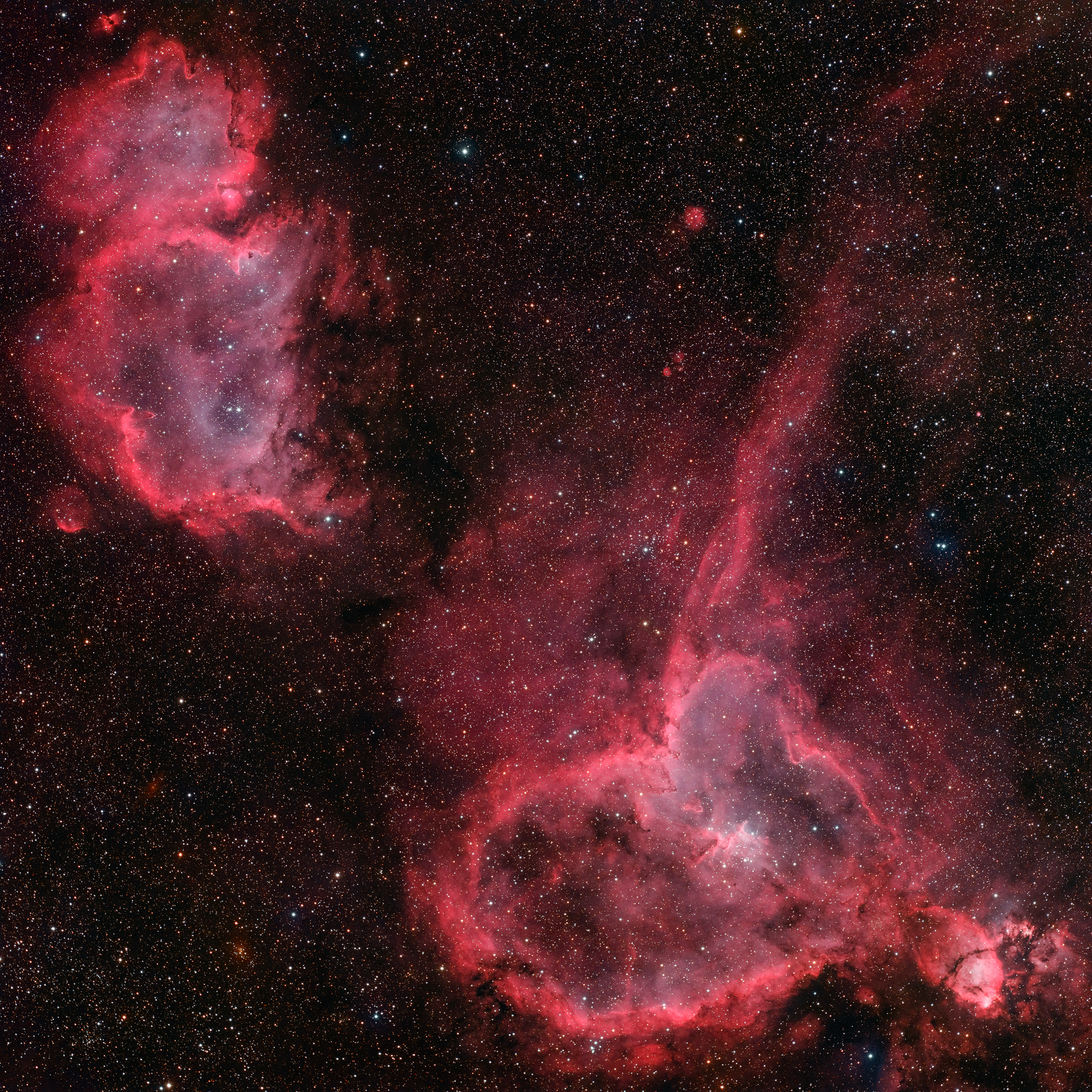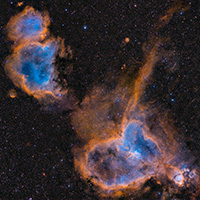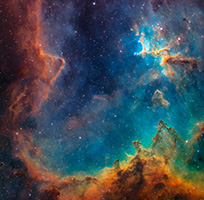| |
|
 |
|
|
|
|
 |
|
The Heart and Soul Nebulas |
|
About This Photograph
These two emission nebulas in the constellation of Cassiopeia are composed of gasses made visible due to ionization by the ultraviolet light coming from the young, hot star clusters near their centers. These stars were likely born from these clouds, but now they are hollowing out huge caverns in their previous nursery. Cones and pillars of gas can be found around the borders of these caverns, formed when denser clumps of gas and dust erode more slowly, leaving wakes pointing away from the bright central stars.
The red emission is caused mostly by the glow of ionized hydrogen gas, with some contribution from sulfur. Near the centers of each nebula, the color takes on a more bluish hue due to ionized oxygen. Oxygen takes more energy to ionize, and so only the regions closer to the bright stars receive enough ultraviolet light to make it glow with a brightness comparable to the more easily ionized hydrogen.
|
|
Related Photographs
|

|
The Heart and Soul Nebulas in Elemental Color |

|
Melotte 15 and the Heart of the Heart Nebula |
|
|
|
Technical Details |
| Optics: | Takahashi FSQ-106 EDX4 | | Camera: | STX-16803 | | Mount: | Paramount MX+ | | Filters: | R, G, B, [SII], Hα, [O III] | | Dates/Times: | 26 Aug - 30 Sep 2020 | | Location: | RC-Astro North Observatory at New Mexico Skies | | Exposure Details: | 19.8 hours total – R:G:B = 2.5:2.5:2.3 hours, [SII]:Hâº:[OIII] = 4.5:4.5:3.5 hours | | Acquisition: | MaxIm DL 6, ACP Expert | | Processing: | PixInsight, Photoshop | | Processing: | This photograph is a combination of RGB and emission-line data, resulting in an emphasis the nebulas relative to the stars. The nebulas and the stars retain their natural color. | |
|
|
| |
|
|
|

